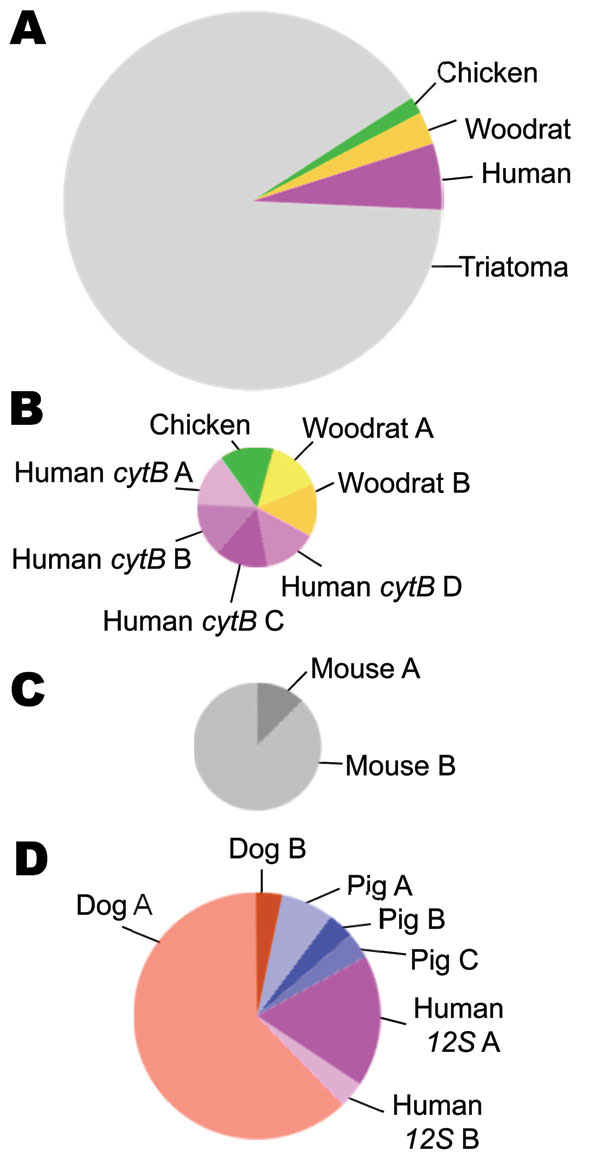Volume 18, Number 4—April 2012
Dispatch
Vector Blood Meals and Chagas Disease Transmission Potential, United States
Figure

Figure. Types of blood meals found by using cytB and 12S assays in insect vector species that carry Trypanosoma cruzi, the pathogen that causes Chagas disease, Arizona and California, USA, 2007 and 2009. Circle size is proportional to the sample size for that comparison. A) Vertebrate taxa and vector DNA (n = 71 sequences), showing that the cytB assay amplified vector DNA more often than blood meal DNA. B) Four vertebrate taxa among the blood meals detected by the cytB assay (n = 7 sequences). Unique haplotypes (DNA sequences or alleles) of human and woodrat are indicated by letters. C) Two mouse haplotypes detected in the mouse-fed control insect (n = 8 sequences). D) Types of blood meal based on the 12S assay (n = 29 sequences).
Page created: March 14, 2012
Page updated: March 14, 2012
Page reviewed: March 14, 2012
The conclusions, findings, and opinions expressed by authors contributing to this journal do not necessarily reflect the official position of the U.S. Department of Health and Human Services, the Public Health Service, the Centers for Disease Control and Prevention, or the authors' affiliated institutions. Use of trade names is for identification only and does not imply endorsement by any of the groups named above.